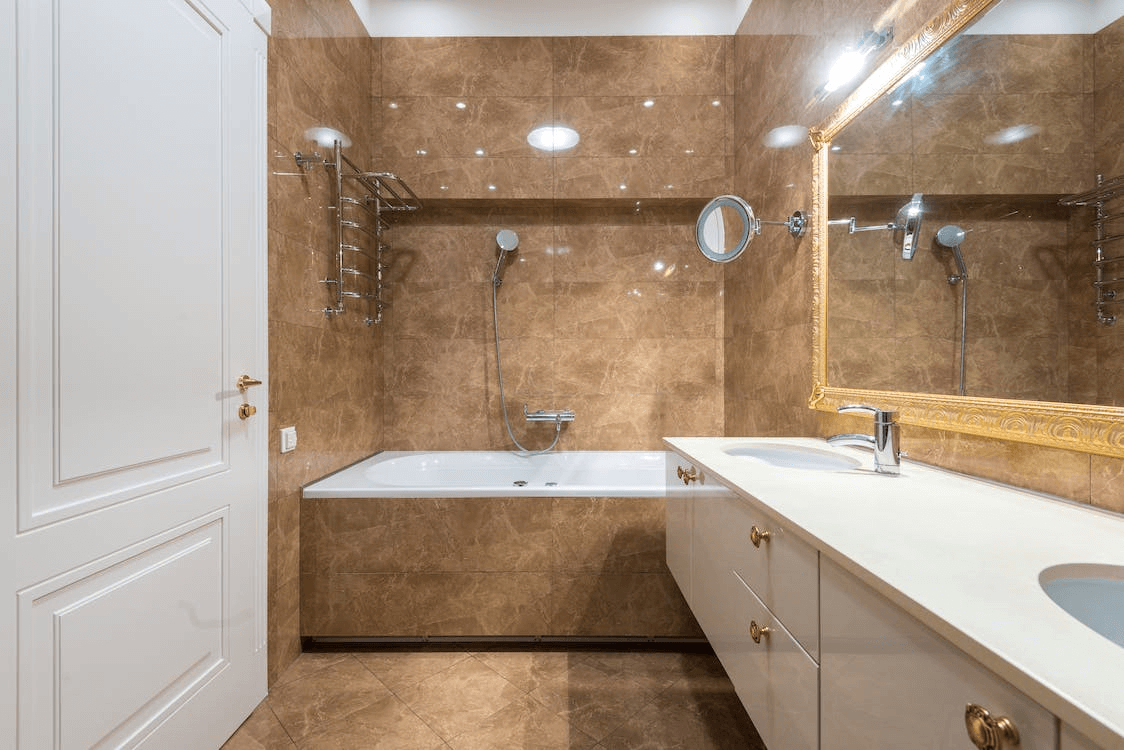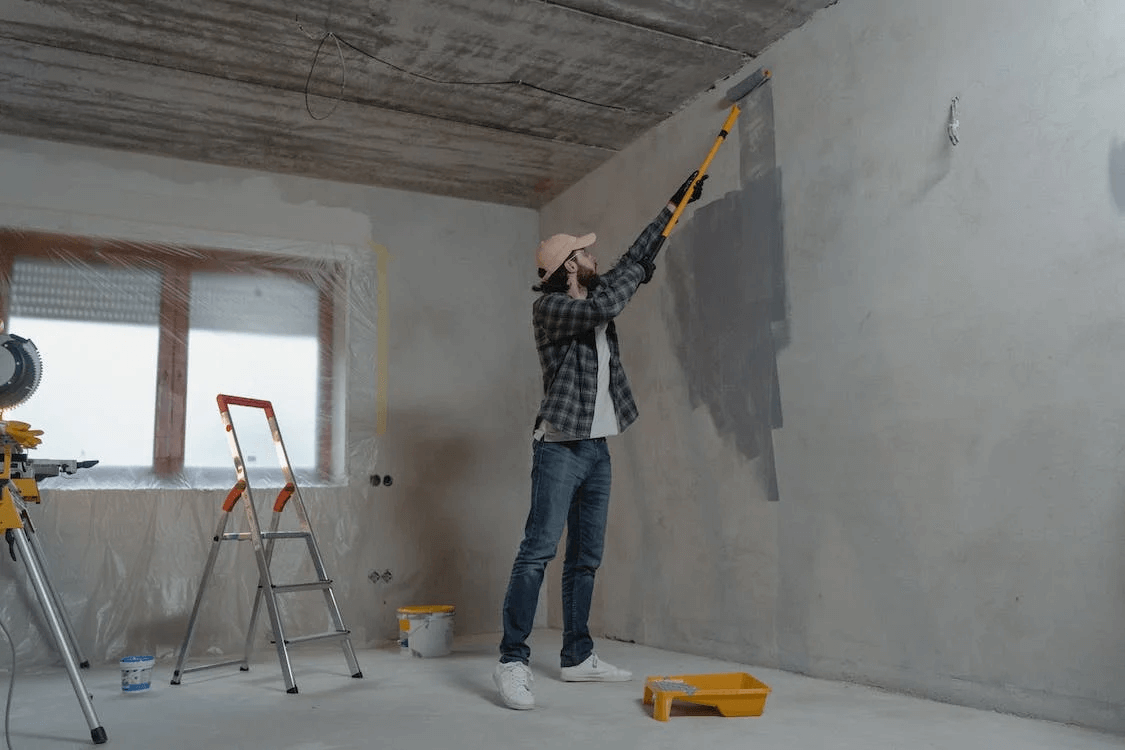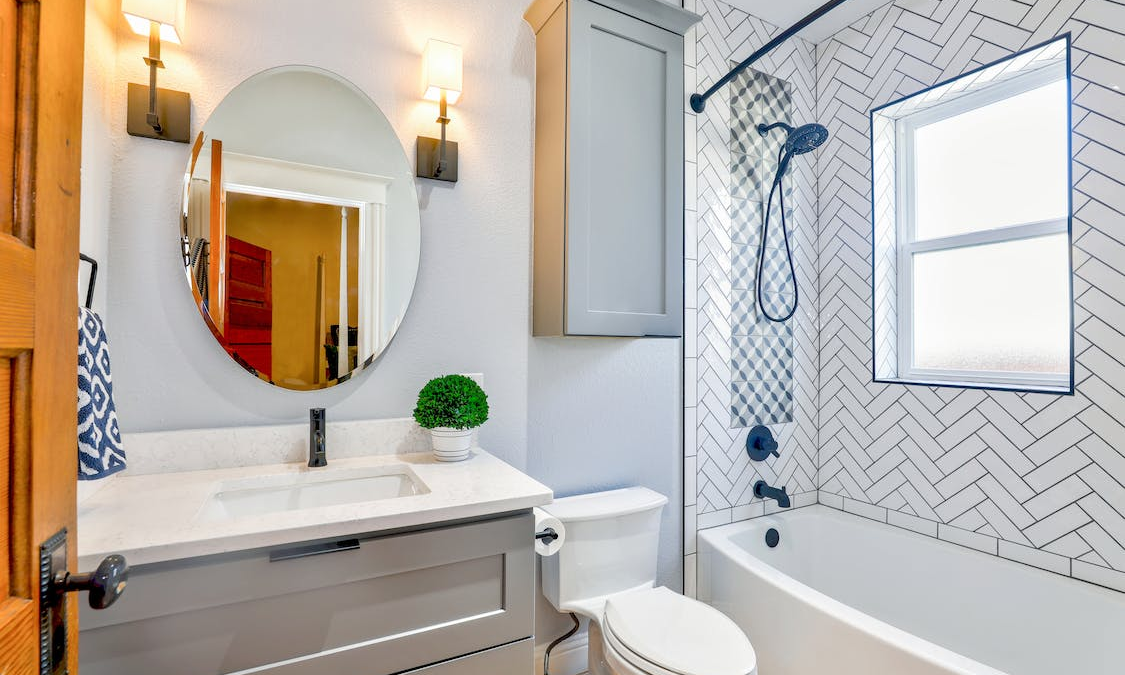
Embarking on your first bathroom renovation project can be both exciting and daunting. Fear not, for we have compiled a beginner-friendly guide that will walk you through the entire process, from assessing your bathroom to adding the finishing touches. Let’s dive in!
Beginner-Friendly Renovation Guide: Best Practices for Beginners
In this section, we’ll break down the process of bathroom renovations into manageable steps, focusing on best practices for beginners.
1. Assessing your Bathroom
The first step in any renovation project is understanding the current state of your bathroom. This includes:
- Assessing your bathroom space: Determine the size of your bathroom using an sq ft calculator to help you make informed decisions about fixtures and materials.
- Identifying problem areas: Inspect your bathroom for any issues, such as water damage or outdated plumbing.
- Setting renovation goals and budget: Outline your desired improvements and allocate funds accordingly.
2. Planning your Renovation
Once you have a clear understanding of your bathroom’s current condition, it’s time to plan your renovation:
- Finding inspiration and design ideas: Browse magazines, websites, and social media platforms for ideas that match your personal style and needs.
- Choosing your color palette and materials: Select colors and materials that complement your desired aesthetic while considering durability and maintenance.
- Hiring a contractor vs DIY approach: Decide whether to hire a professional or tackle the project yourself based on your skill set, budget, and available time.
3. Preparing for Renovation
With a solid plan in place, you’re ready to prepare for the renovation:
- Gathering necessary tools and materials: Ensure you have all the required tools and materials for your project, including safety equipment.
- Setting up a work area: Designate a space for your tools, materials, and any debris to keep your home organized during the renovation.
- Taking safety precautions: Protect yourself and your home by following safety guidelines, such as wearing protective gear and turning off water and electricity when necessary.

Demolition and Reconstruction
Now comes the exciting part – demolition and reconstruction:
- Removing old fixtures and finishes: Carefully remove any outdated or damaged components, such as tiles, fixtures, and cabinetry.
- Addressing plumbing and electrical issues: Consult with a professional to ensure your plumbing and electrical systems are up to code and can accommodate your new fixtures.
- Installing new flooring, walls, and fixtures: Follow proper installation techniques for your chosen materials, whether it’s laying tile or installing a new vanity.

Finishing Touches
Your renovation is almost complete – it’s time for the finishing touches:
- Adding finishing touches: Choose functional and stylish lighting options, and accessorize your bathroom with towels, artwork, and other decorative elements.
- Final inspection and clean up: Review your work for any remaining issues, and clean up your space to reveal your beautifully renovated bathroom.
Tips for Bathroom Renovations
To ensure a successful bathroom renovation, keep these key tips in mind:
- Prioritize functionality and accessibility: Make sure your bathroom design meets your needs and accommodates users of all abilities.
- Make smart material choices for durability and easy maintenance: Opt for materials that are easy to clean and maintain, such as non-porous countertops and water-resistant flooring.
- Maximize storage and organization: Utilize space-saving solutions like built-in shelves and cabinets to keep your bathroom clutter-free.
Key Takeaways
Embarking on your first bathroom renovation project doesn’t have to be overwhelming. However, with a bit of patience, preparation, and creativity, you can turn your outdated bathroom into a beautiful and functional space that meets your needs and style preferences.
As you navigate through the steps of assessing your bathroom, planning your renovation, preparing for the work, demolishing and reconstructing, and adding the finishing touches, remember to stay flexible and open-minded.
Don’t be afraid to experiment with different color palettes, materials, and designs, and always prioritize functionality, durability, and organization in your choices. Whether you decide to DIY or hire a professional, the most important thing is to enjoy the process and keep your eyes on the prize.
With dedication, persistence, and a willingness to learn, you can effectively turn your bathroom into the serene sanctuary you’ve always dreamed of.
Ava Clarkson
Related posts
Stay connected
Today's pick
- Things to Remember While Designing Your Custom Modular Kitchen in GurgaonGurgaon now known as Gurugram is the second largest city in the state of Haryana and is a reflectiossn of an ideal modern city with futuristic goals. Witnessing rapid urbanization, it has also emerged as a hub for contemporary homes, with homeowners seeking innovative and... The post Things to Remember While Designing Your Custom Modular […]

